FIT CTU
Adam Vesecký
vesecky.adam@gmail.com
Lecture 9
Graphics
Architecture of Computer Games
Space
Game graphics is about squeezing a great deal of linear algebra into the tiny slice of computational time the game loop gives us.
Game categories
2D
- top-down or side view
- sprites are mapped onto quads
- layered rendering, orthographic projection
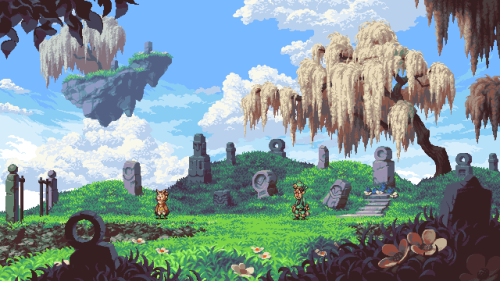
Isometric 2D
- view that reveal more facets than pure 2D
- several types of projection: 104°-135°
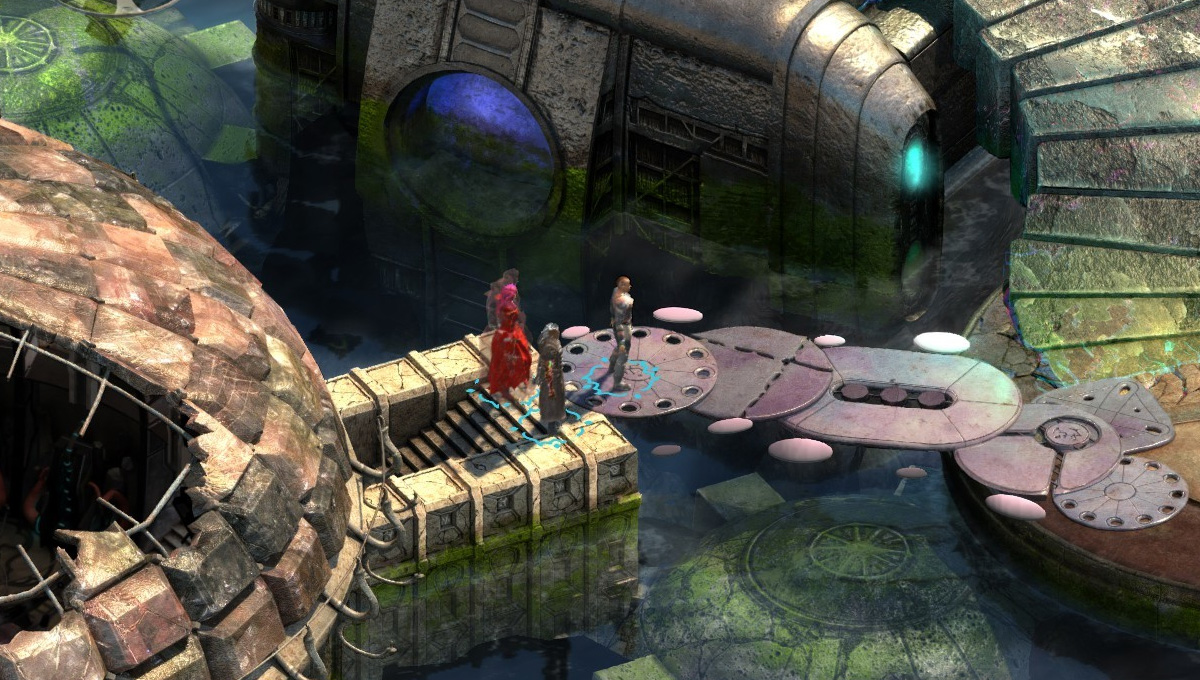
Fake 3D
- raycasting
- Mode 7 from SNES games
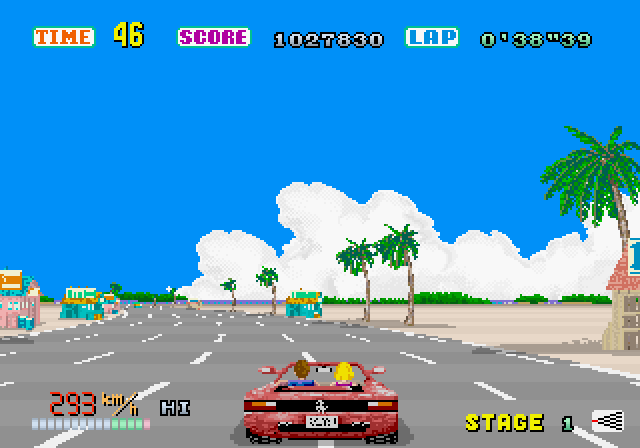
2.5D
- 3D game with a gameplay limited to 2 dimensions (e.g. sidescrollers)
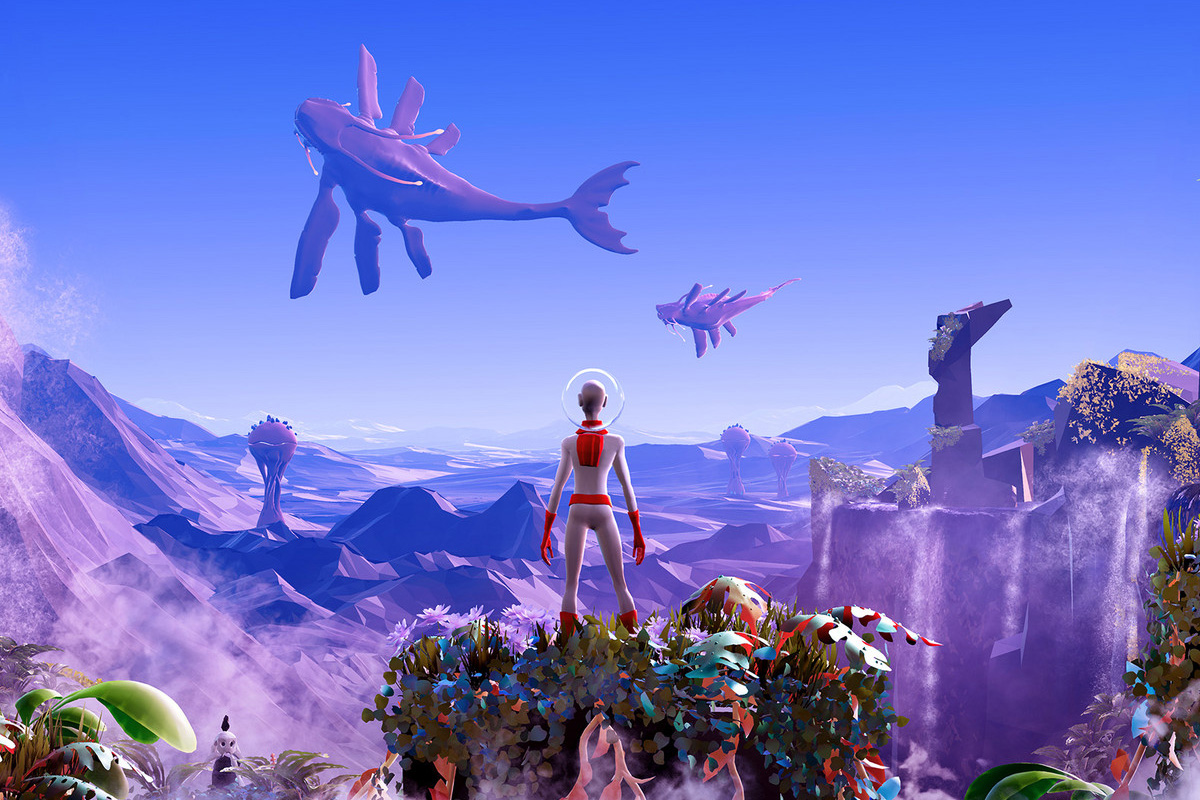
3D
- regular 3-dimensional game
Example: Game Boy Advance layers
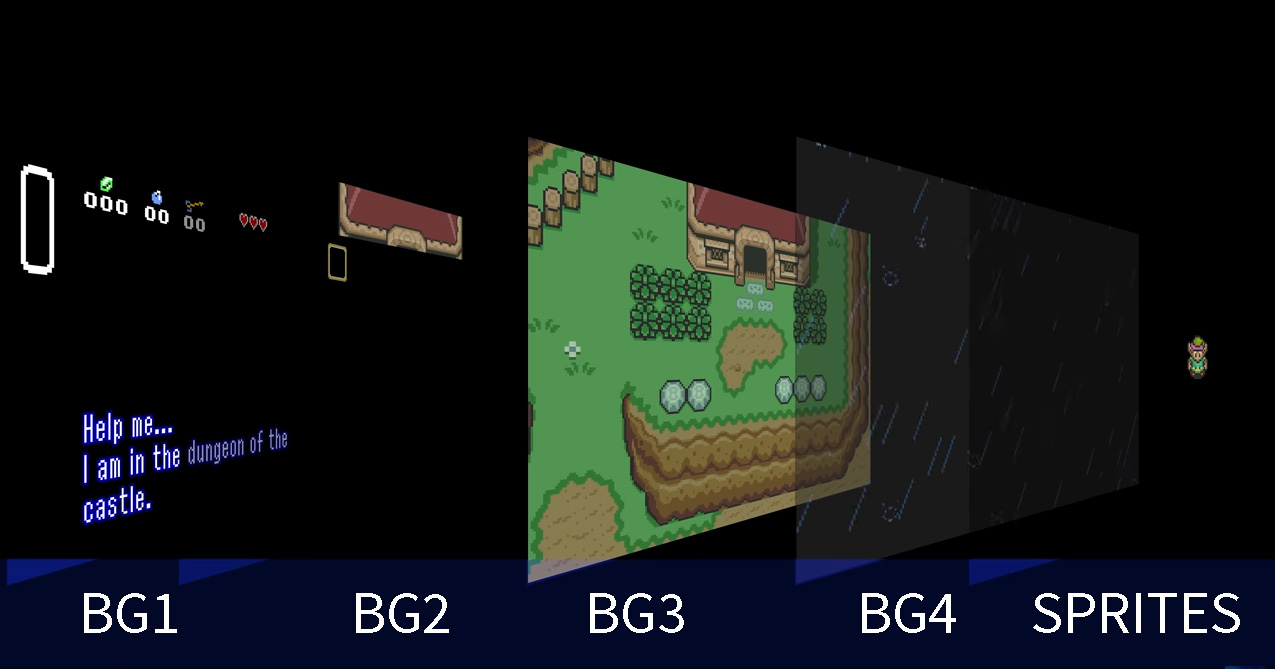
Space
Model Space
- origin is usually placed at a central location (center of mass)
- axes are aligned to natural direction of the model
World Space
- fixed coordinate space, in which the transformations of all objects in the game world are expressed
View/Camera Space
- coordinate frame fixed to the camera
- space origin is placed at the focal point of the camera
- OpenGL: camera faces toward negative z
Clip Space
- a rectangular prism extending from -1 to 1 (OpenGL)
View/Screen Space
- a region of the screen used to display a portion of the final image
World-Model-View
Clip Space
View Volume
- View volume - region of space the camera can see
- Frustum - the shape of view volume for perspective projection
- Rectangular prism - the shape of view volume for orthographic projection
- Field of View (FOV) - the angle between the top and bottom of a 2D surface of the projected world
Perspective projection
Orthographic projection
Lookat Vector
- a unit vector that points in the same direction as the camera
- if the dot product between lookAt vector an the normal vector of a polygon is lower than zero, the polygon is facing the camera
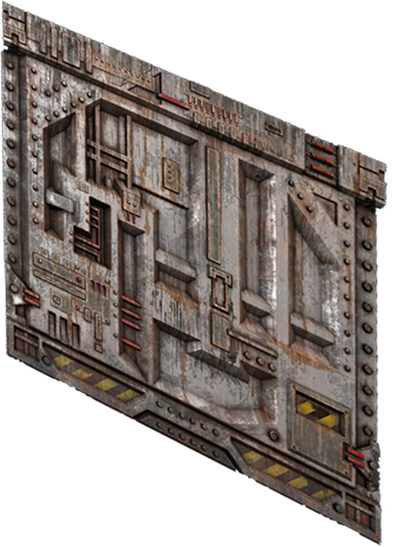
Animations
Animations
Rotoscoping animations
- predefined set of images/sprites
- simple and intuitive, but impossible to re-define without changing the assets
Keyframed animation
- keyframes contain values (position, color, modifier,...) at given point in time
- intermediate frames are interpolated
Skeletal animation
- object has a skeleton (rigging) bound to its mesh by assigning weights (skinning)
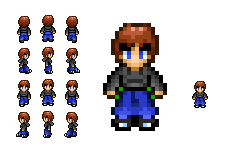
Rotoscoping
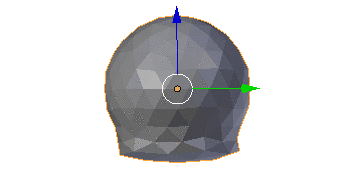
Keyframed

Skeletal 2D
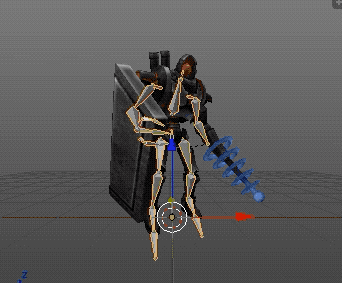
Skeletal 3D
Interpolation
- method that calculates semi-points within the range of given points
Applications
- graphics - image resizing
- animations - transformation morphing
- multiplayer - game state morphing
- audio/video - sample/keyframe interpolation
Main methods
- Constant interpolation (none/hold)
- Linear interpolation
- Cosine interpolation
- Cubic interpolation
- Bézier interpolation
- Hermite interpolation
- SLERP (spherical linear interpolation)
Bezier Curve
- parametric curve defined by a set of control points
- most common - cubic curve, 4 points, 2 points provide directional information
Linear Interpolation
Linear Interpolation
- for 1D values (time, sound)
Bilinear interpolation
- on a rectilinear 2D grid
- for 2D values (images, textures)
- Q - known points (closest pixels)
- P - desired point
Trilinear interpolation
- on a regular 3D grid
- for 3D values (mipmaps)
Example: 1D interpolation
Example: 2D interpolation

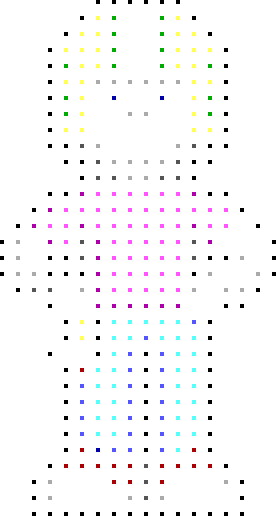
No interpolation
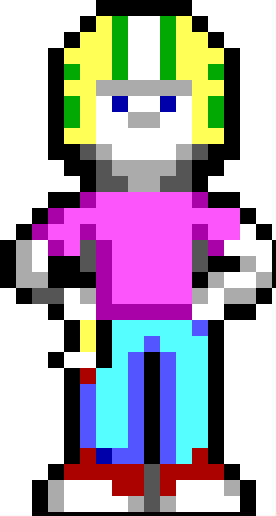
Constant (nearest neighbor)
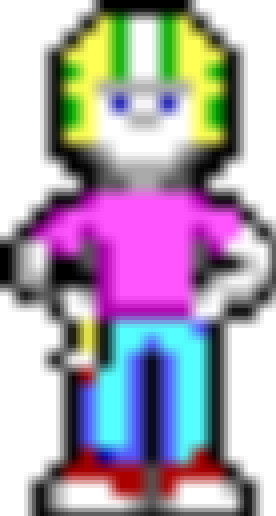
Bilinear
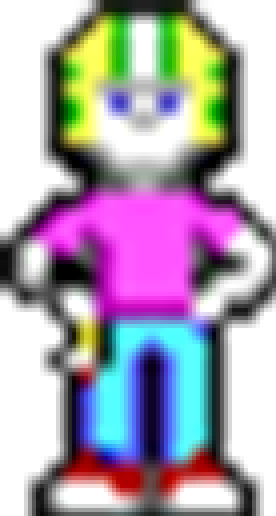
Cubic
Animation blending
- key concept in run-time animation to create smooth transitions
- for each joint rotation, we compute in-between values
- a significant amount of effort in 3D games comes from animation-physics-gameplay sync
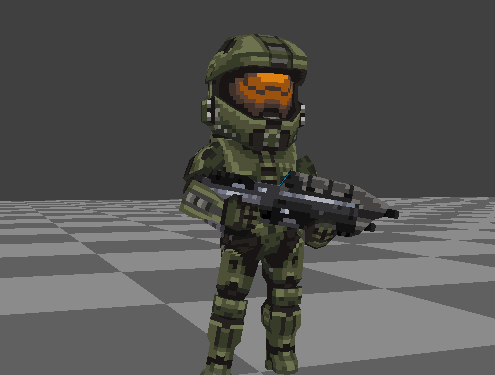
GPU processing
History of PC GPU
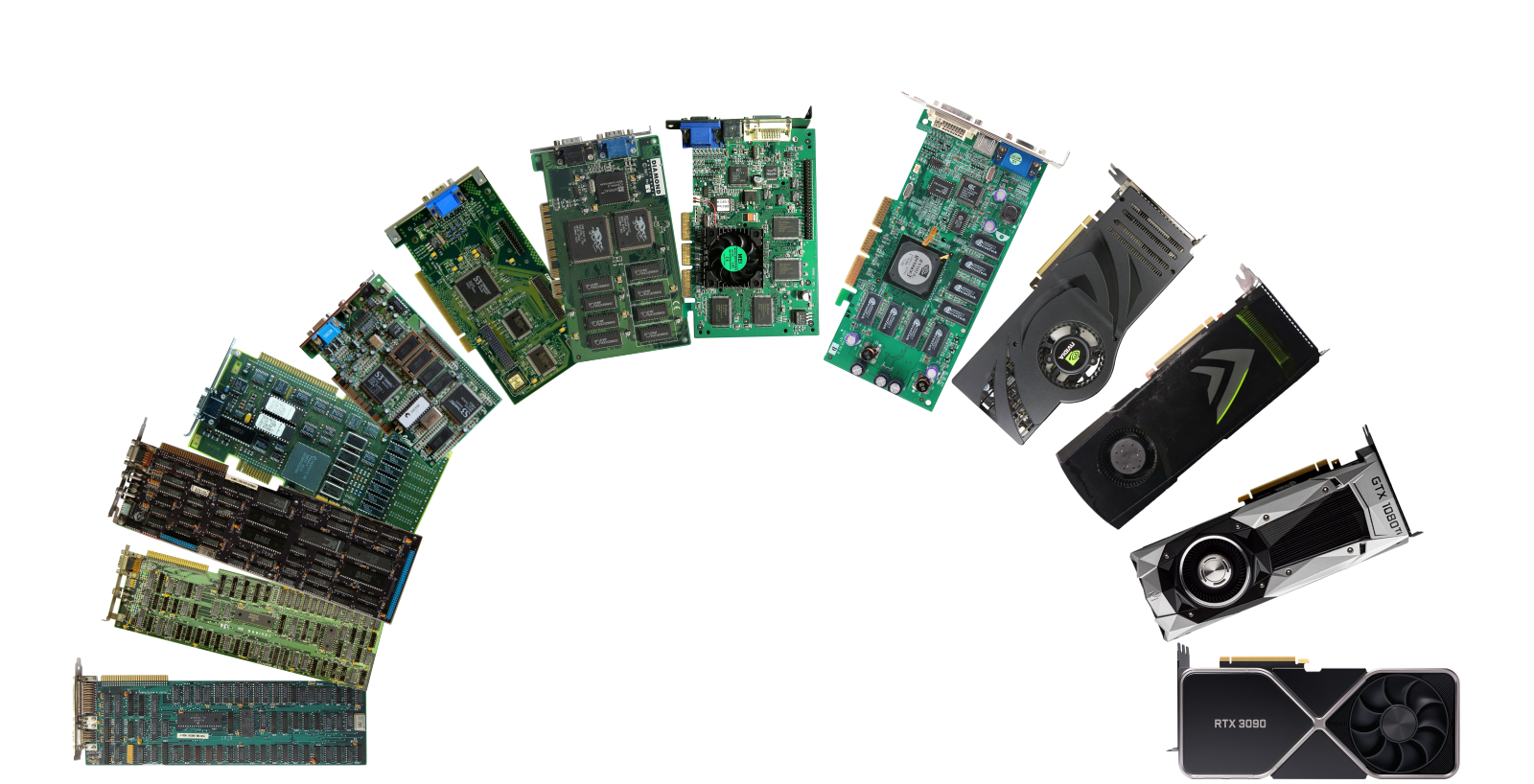
History of PC GPU
- 1981 - IBM MDA, Monochrome Display Adapter
- 1982 - IBM CGA, Color Graphics Adapter, 4/16 colors
- 1984 - IBM EGA, Enhanced Graphics Adapter, 16/64 colors
- 1987 - VGA - Video Graphics Array, 256 colors
- 1994 - S3 Trio64 - golden era of DOS games
- 1996 - 3dfx Voodoo - rise of 3D acceleration
- 1999 - Geforce 256 - rendering pipeline
- 2003 - Geforce 3 - rise of shaders
- 2006 - Geforce 8 - SM architecture, CUDA
- 2016 - Oculus Rift - rise of VR headsets
- 2018 - Geforce 10 - Tensor cores and Raytracing
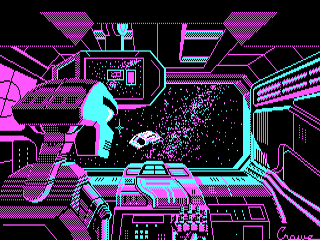
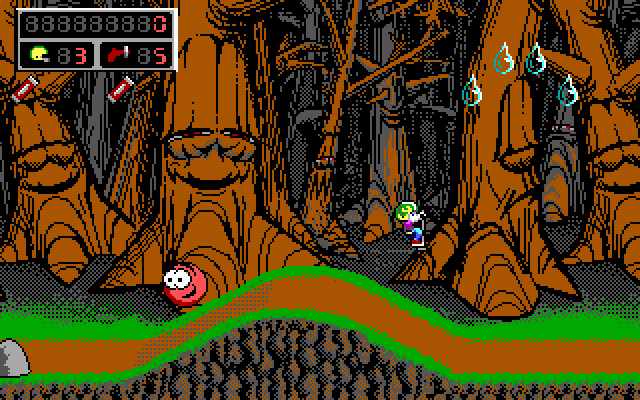
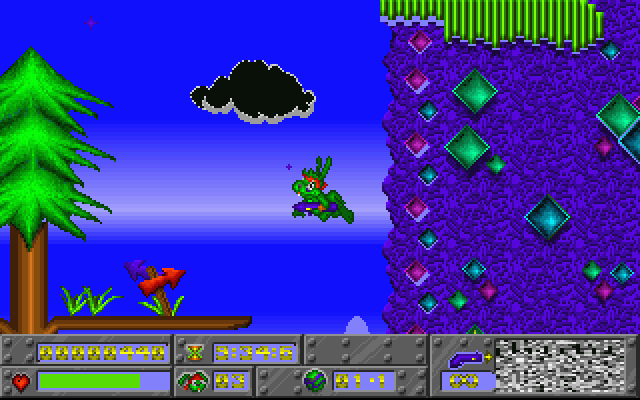
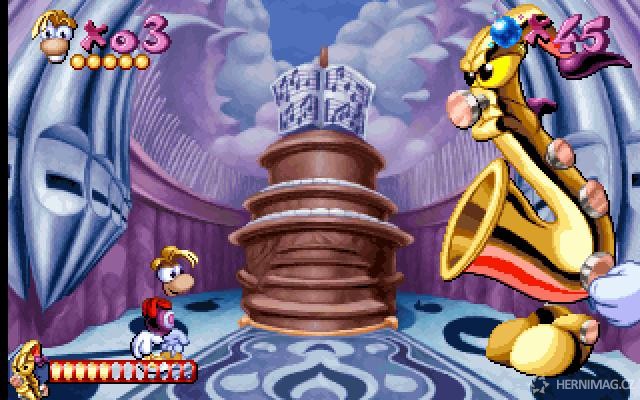
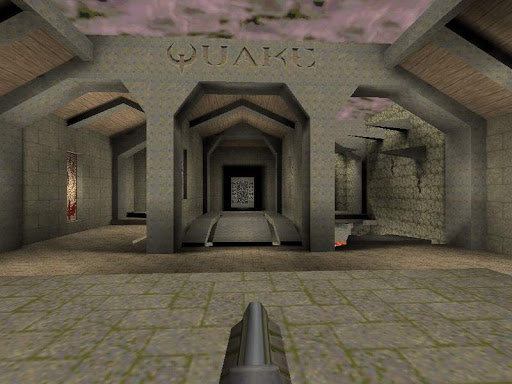
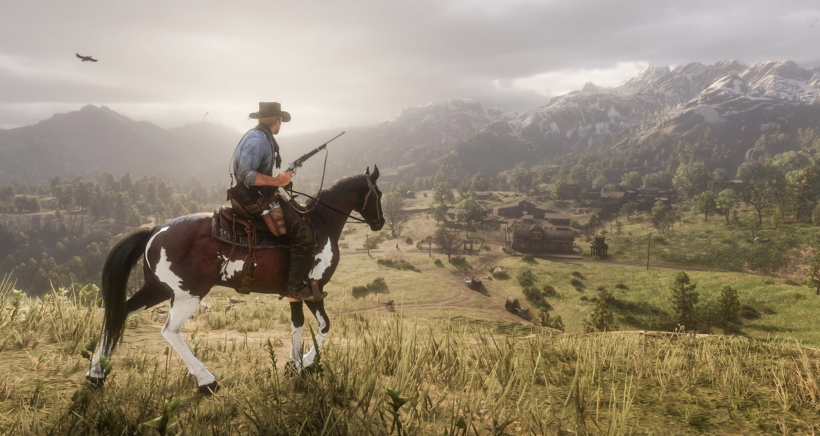
Graphics API
DirectX
- since 1995
- widely used for Windows and Xbox games
- current version - DirectX 12 Ultimate
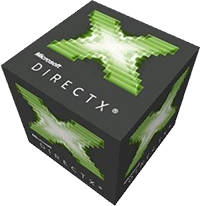
OpenGL
- since 1992
- concept of state machine
- cross-platform
- OpenGL ES - main graphics library for Android, iOS

Vulkan
- since 2015
- referred as the next generation of OpenGL
- lower overhead, more direct control over the GPU than OpenGL
- unified management of compute kernels and shaders

Triangle meshes
- the simplest type of polygons, always planar
- all GPUs are designed around triangle rasterization
Constructing a triangle mesh
- a) winding order (clockwise or counter-cw)
- b) triangle lists, strips and fans
- c) mesh instancing - shared data
Terms
Vertex
- primarily a point in 3D space with x, y, z coordinates
- attributes: position vector, normal, color, uv coordinates, skinning weights,...
Fragment
- a sample-sized segment of a rasterized primitive
- its size depends on sampling method
Texture
- a piece of bitmap that is applied to a model
Occlusion
- rendering two triangles that overlap each others
- Z-fighting issue
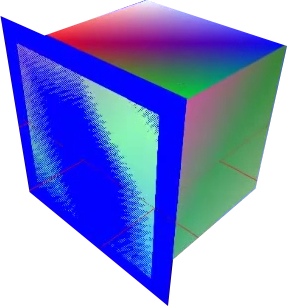
Z-Fighting
- solution: more precise depth buffer
Culling
- process of removing triangles that aren't facing the camera
- frustum culling, portals, anti-portals,...
NVidia Amper Architecture
Rendering pipeline
- Vertex Fetch: driver inserts the command in a GPU-readable encoding inside a pushbuffer
- Poly Morph Engine of SM fetches the vertex data
- Warps of 32 threads are scheduled inside the SM
- Vertex shaders in the warp are executed
- H/D/G shaders are executed (optional step)
- Raster engine generates the pixel information
- data is sent to ROP (Render Output Unit)
- ROP performs depth-testing, blending, antialiasing etc.
Rendering pipeline
Vertex shader phase
- handles transformation from model space to view space
- full access to texture data (height maps)
Tessellation shader phase (optional)
- subdivides geometry (e.g. for brick walls)
- Tessellation Control Shader - determines the amount of tessellation
- Tessellation Evaluation Shader - applies the interpolation
Geometry shader phase (optional)
- operates on entire primitives in homogeneous clip space
Rasterization phase
- Assembly - converts a vertex stream into a sequence of base primitives
- Clipping - transformation of clip space to window-space, discarding triangles that are outside
- Culling - discards triangles facing away from the viewer
- Rasterization - generates a sequence of fragments (window-space)
Rendering pipeline
Fragment shader phase
- input: fragment, output: color, depth value, stencil value
- can address texture maps and run per-pixel calculations
Final phase
- Additional culling tests
- pixel ownership - fails if the pixel is not owned by the API
- scissor test - fails if the pixel lies outside of a screen rectangle
- stencil test - comparing against stencil buffer
- depth test - comparing against depth buffer
- Color blending
- combines colors from fragment shader with colors in the color buffers
- fragments can override each other or be mixed together
- writes data to framebuffer
- swaps buffers
Rendering pipeline
Shaders
- programs that run on the video card in order to perform a variety of specialized functions (lighting, effects, post-processing, physics, AI)
Vertex shader
- input is vertex, output is transformed vertex
Geometry shader (optional)
- input is n-vertex primitive, output is zero or more primitives
Tessellation shader (optional)
- input is primitive, output is subdivided primitive
Pixel (fragment) shader
- input is fragment, output is color, depth value, stencil value
- widely used for visual effects
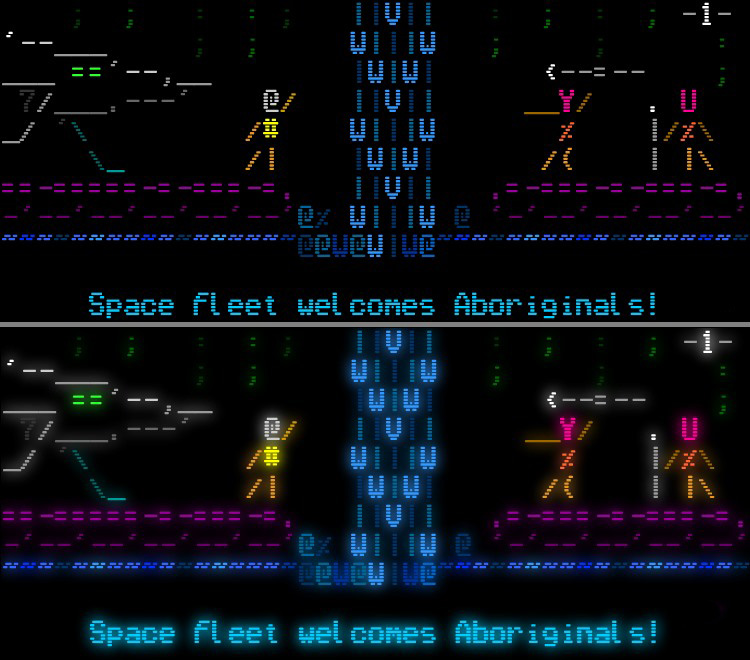
ASCIIdent
Compute shader
- shader that runs outside of the rendering pipeline (e.g. CUDA)
Shader applications
Vertex shader
- 3D-to-2D transformation
- displacement mapping
- skinning
Tessellation shader
- Hull Shader - tessellation control
- Domain Shader - tessellation evaluation
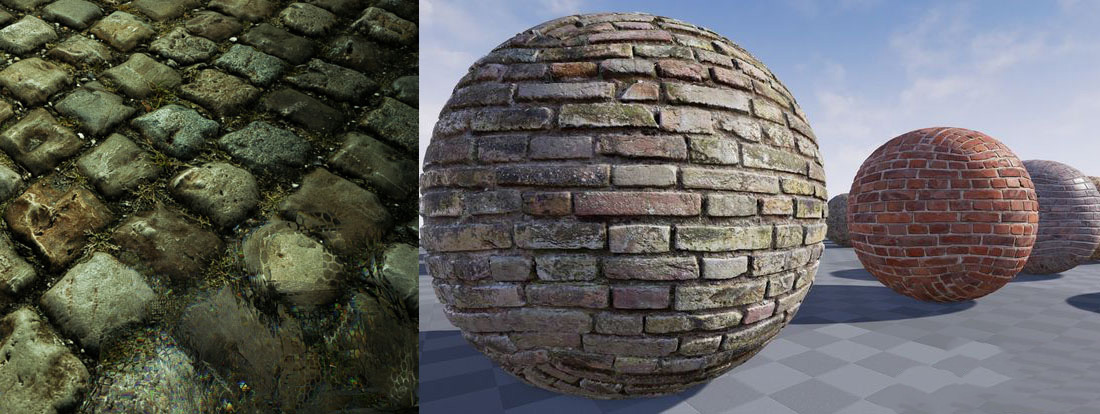
Surface Tessellation
Geometry shader
- sprite-from-point transformation
- cloth simulation
- fractal subdivision
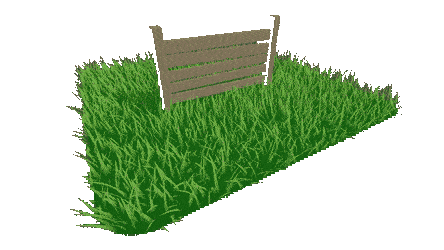
Geometry shader grass
Pixel (fragment) shader
- bump mapping
- particle systems
- visual effects
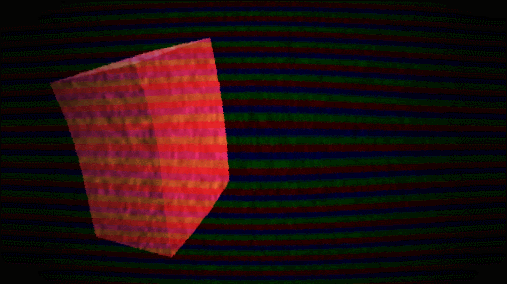
Screen Effect
Example: Geometry shader
| 1 | #version 150 core |
| 2 | layout(points) in; |
| 3 | layout(line_strip, max_vertices = 11) out; |
| 4 | in vec3 vColor[]; |
| 5 | out vec3 fColor; |
| 6 | const float PI = 3.1415926; |
| 7 | |
| 8 | void main() { |
| 9 | fColor = vColor[0]; |
| 10 | |
| 11 | for (int i = 0; i <= 10; i++) { |
| 12 | // Angle between each side in radians |
| 13 | float ang = PI * 2.0 / 10.0 * i; |
| 14 | |
| 15 | // Offset from center of point (0.3 to accomodate for aspect ratio) |
| 16 | vec4 offset = vec4(cos(ang) * 0.3, -sin(ang) * 0.4, 0.0, 0.0); |
| 17 | gl_Position = gl_in[0].gl_Position + offset; |
| 18 | |
| 19 | EmitVertex(); |
| 20 | } |
| 21 | |
| 22 | EndPrimitive(); |
| 23 | } |
Rendering concepts
Rendering techniques
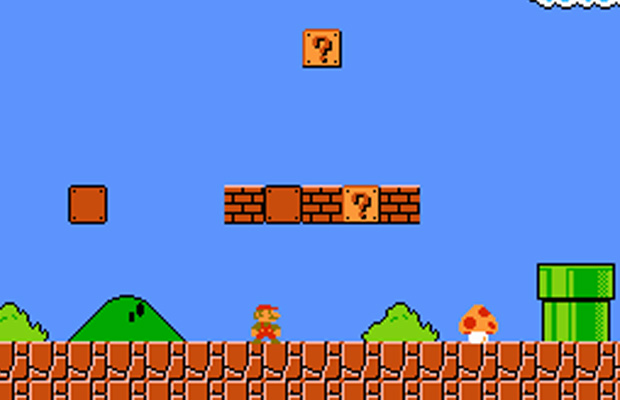
Sprite placement
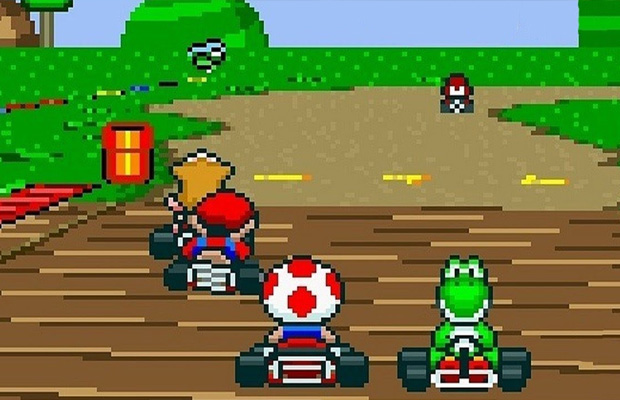
Raycasting

Rasterization
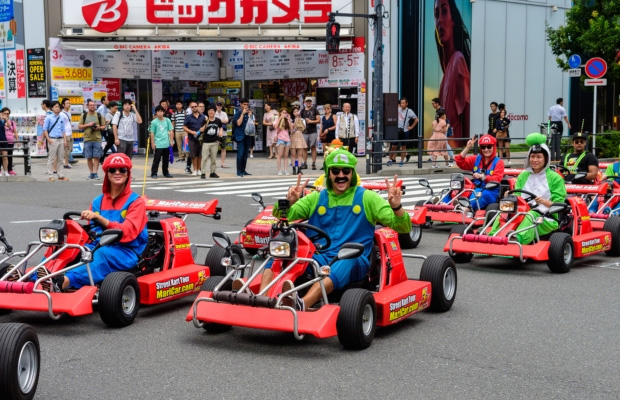
Raytracing
Raycasting
- used as a variation of raster effects to circumvent hardware limits in early-gaming era
- we cast a ray, obtain an object it hits and render a its trapezoid
- horizontal raycasting (racing games, fighting games), vertical raycasting (FPS)
- Blood (1997) - one of the last AAA games that used raycasting
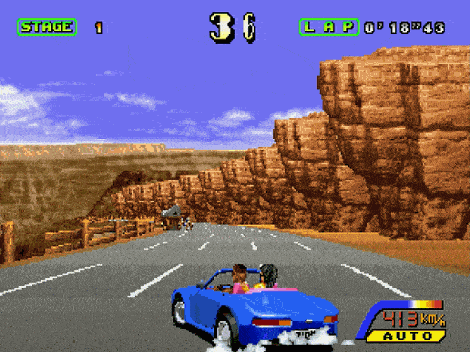
1992: Outrunners
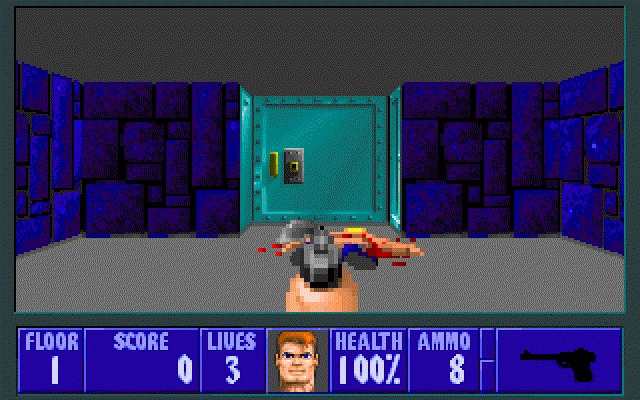
1992: Wolfenstein 3D
Raycasting
- send out a ray that starts at the player's location
- move this ray forward with the direction of the player
- if the ray hits an object, process it
Principle
Precise sampling
Fixed sampling
Rasterization
- converts each triangle into pixels on a 2D screen
- shadows are either baked, or calculated via shadow maps or shadow volumes
- lighting is calculated in vertex or fragment shader
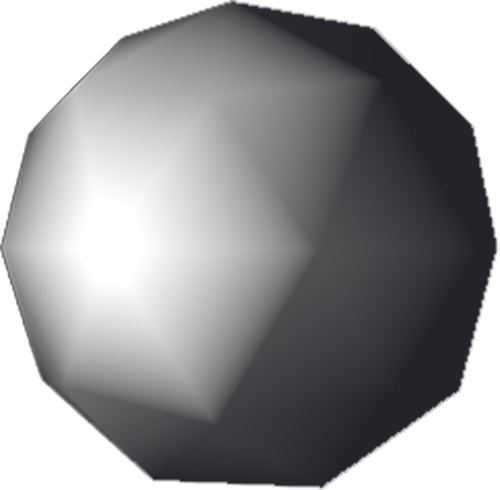
Vertex lighting
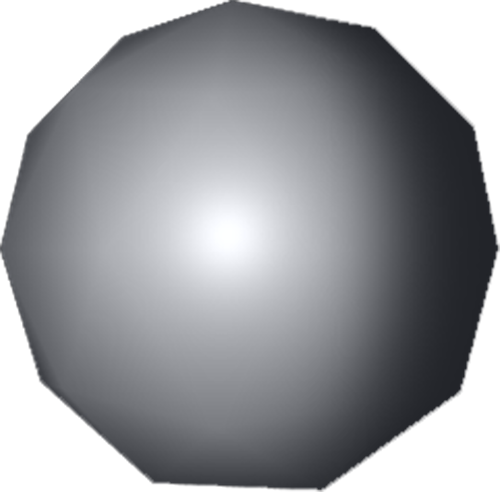
Fragment lighting
Shadow mapping
Raytracing
- provides realistic lighting by simulating the physical behavior of light
- several phases: ray-triangle tests, BVH traversal, denoising
- use-cases: reflections, shadows, global illumination, caustics
- the light traverses the scene, reflecting from objects, being blocked (shadows), passing through transparent objects (refractions), producing the final color
- APIs: OptiX, DXR, VKRay
Other techniques
LOD
- level of detail, boosts draw distance
- pioneered with Spyro the Dragon Series
Texture mapping
- mapping of 2D surface (texture map) onto a 3D object
- early games have issues with perspective correctness
- common use - UV mapping
Baking
- a.k.a rendering to texture
- generating texture maps that describe different properties of the surface of a 3D model
- effects are pre-calculated in order to save computational time and circumvent hardware limits
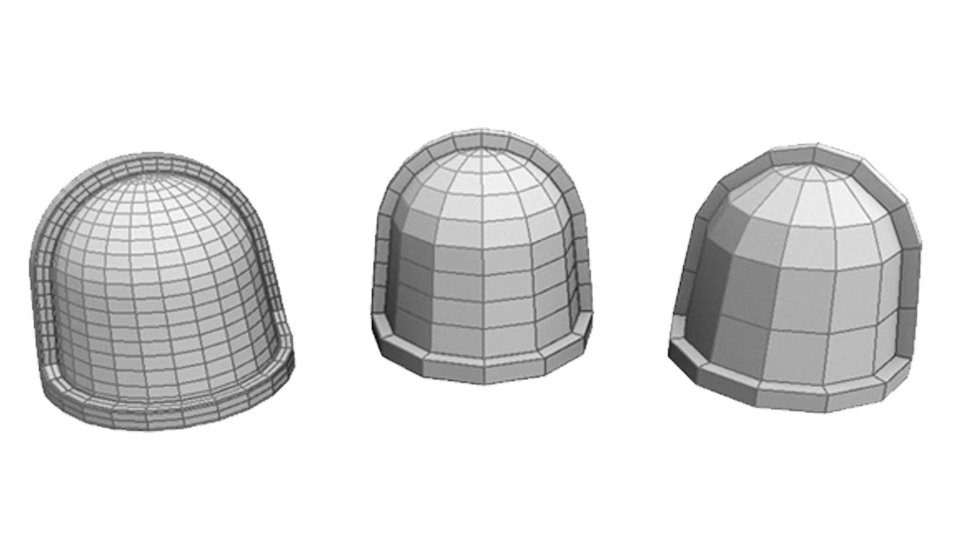
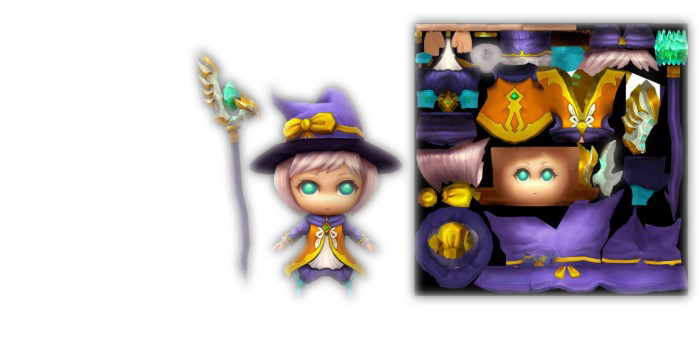

Texture filtering
- there is not a clean one-to-one mapping between texels and pixels
- GPU has to sample more than one texel and blend the resulting colors
Mipmapping
- for each texture, we create a sequence of lower-resolution bitmaps
- objects further from the camera will use low-res textures
Nearest neighbor
- the closest texel to the pixel center is selected
Bilinear filtering
- the four texels surrounding the pixel center are sampled, and the resulting color is a weighted average of their colors
Trilinear filtering
- bilinear filtering is used on each of the two nearest mipmap levels
Anisotropic filtering
- samples texels within a region corresponding to the view angle
Texture filtering
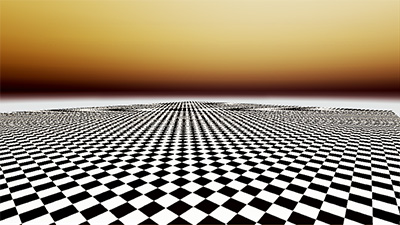
Nearest neighbor
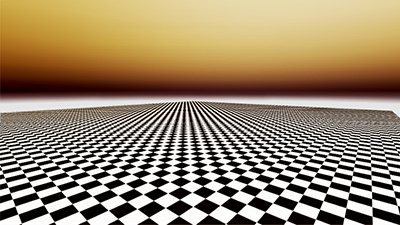
Anisotropic
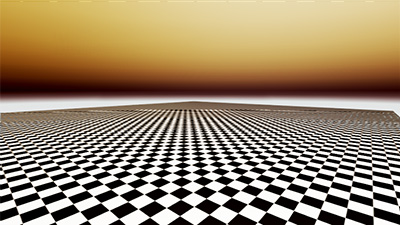
Bilinear
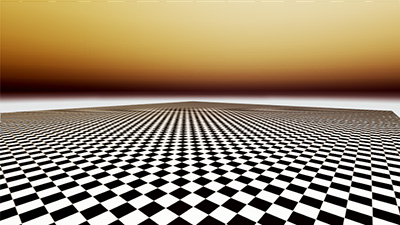
Trilinear
Anisotropic filtering
- used to smooth sharp edges of vertices
- should be disabled for pixel-art games!
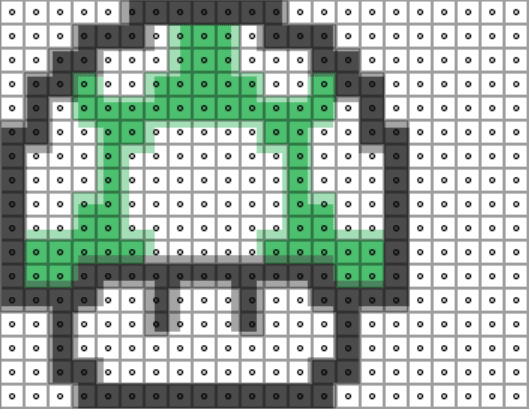
FSAA/SSAA (Super-Sampled Antialiasing)
- uses sub-pixel values to average out the final values
DSR (Dynamic Super Resolution)
- scene is rendered into a frame buffer that is larger than the screen
- oversized image is downsampled
MSAA (Multisampled Antialiasing)
- comparable to DSR, half of the overhead
- the pixel shader only evaluates once per pixel
CSAA (Coverage sample Antialiasing)
- NVidia's optimization of MSAA
- new sample type: coverage sample
DLSS (Deep Learning Super Sampling)
- AI-based DSR, uses Tensor Cores
Example: Anisotropic filtering
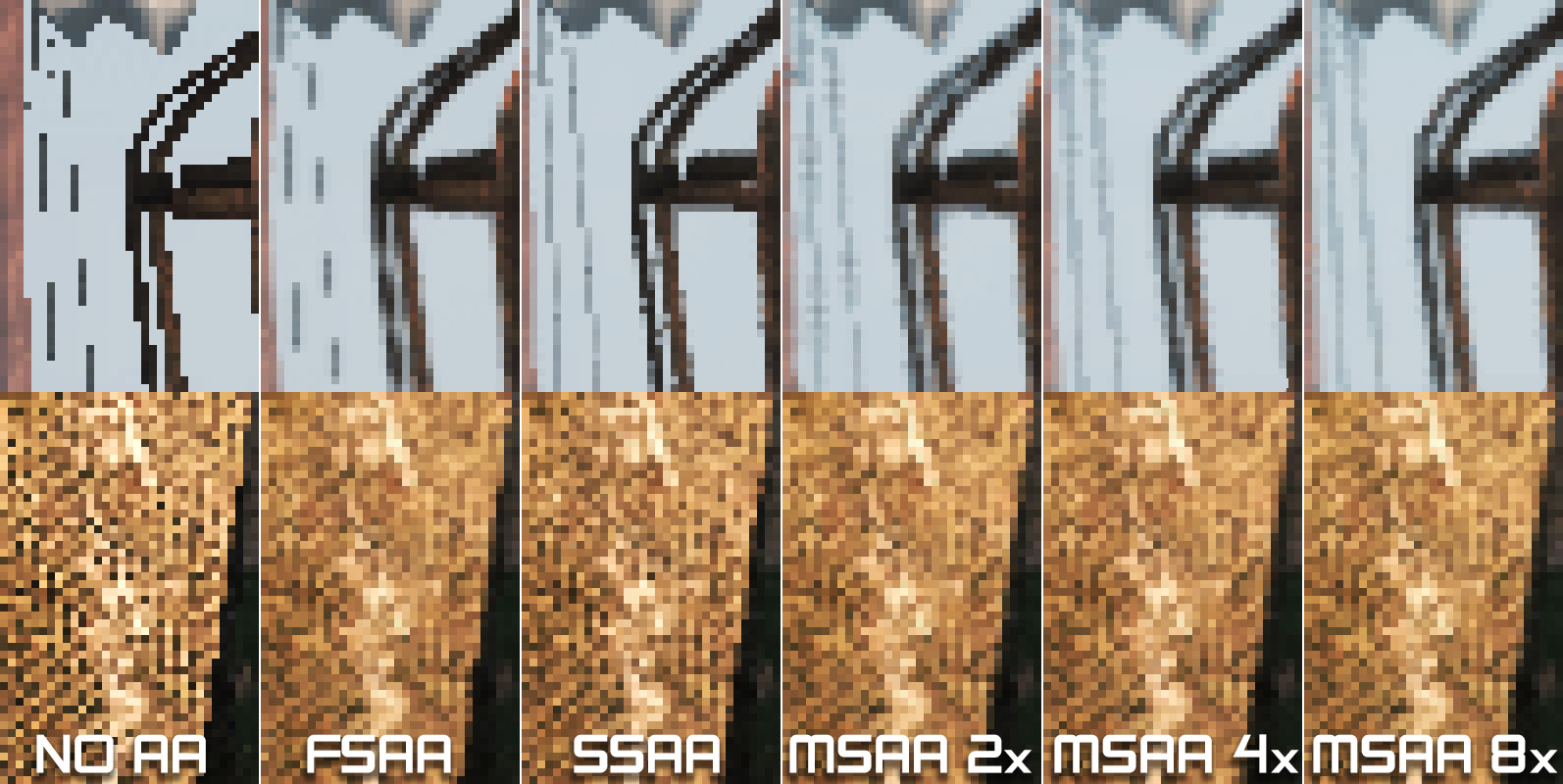
Rendering features
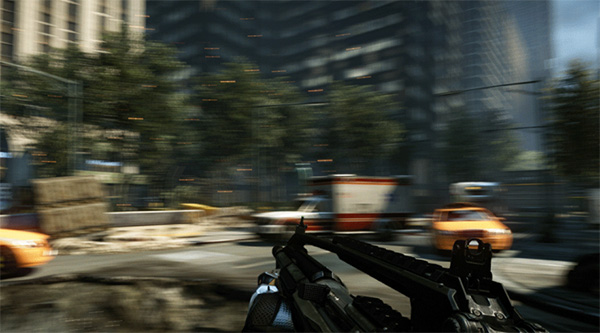
Motion blur
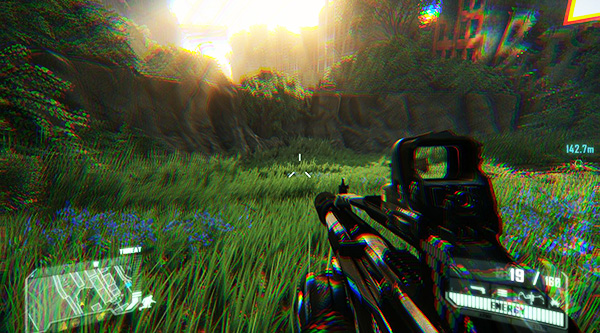
Chromatic Aberration
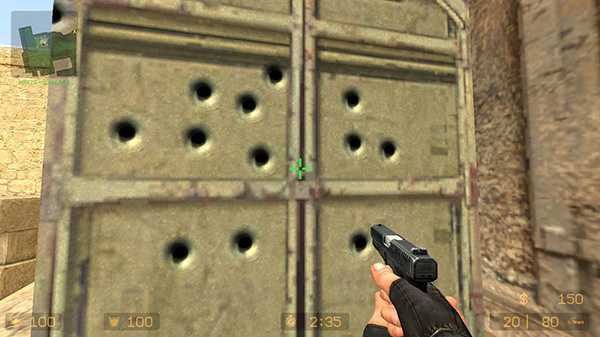
Decals
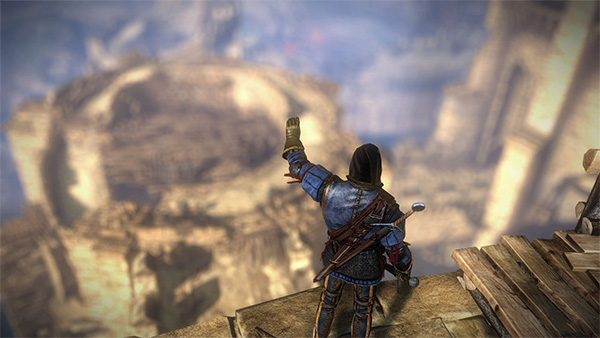
Depth of field
Rendering features
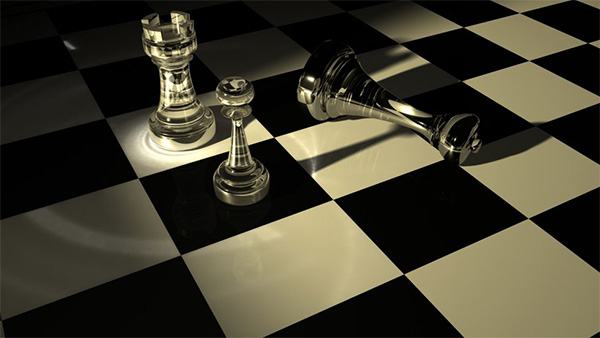
Caustics
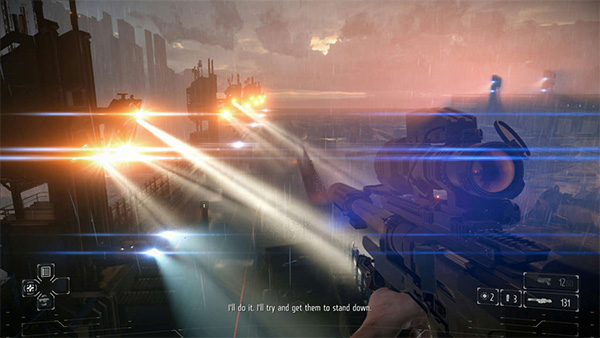
Lens flare
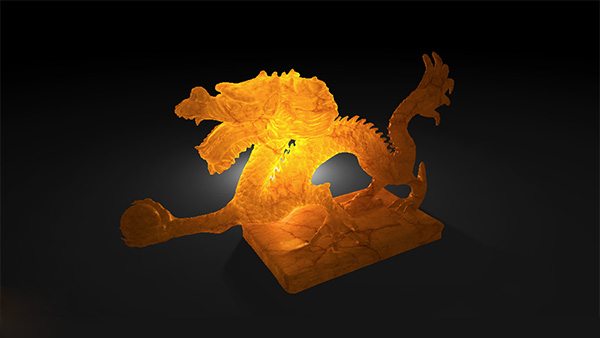
Subsurface Scattering
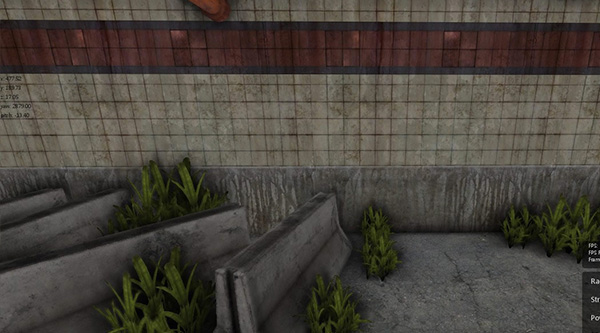
Ambient Occlusion
Lecture Summary
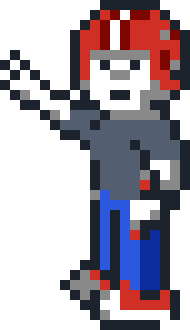
- I know the difference between model space, world space, view space, clip space and screen space
- I know what view volume and field of view is
- I know what interpolation is
- I know terms like Vertex, Fragment, Texture, Occlusion, and Culling
- I know what purpose serve vertex and fragment shader
- I know what LOD, texture mapping, texture filtering, and baking is
Goodbye Quote
It's in the game!EA Sports